Our Wedgetail Camper first landed on top of our truck tray in 2016. After six years, it had travelled nearly 200,000km… all the while providing us with a travelling home.
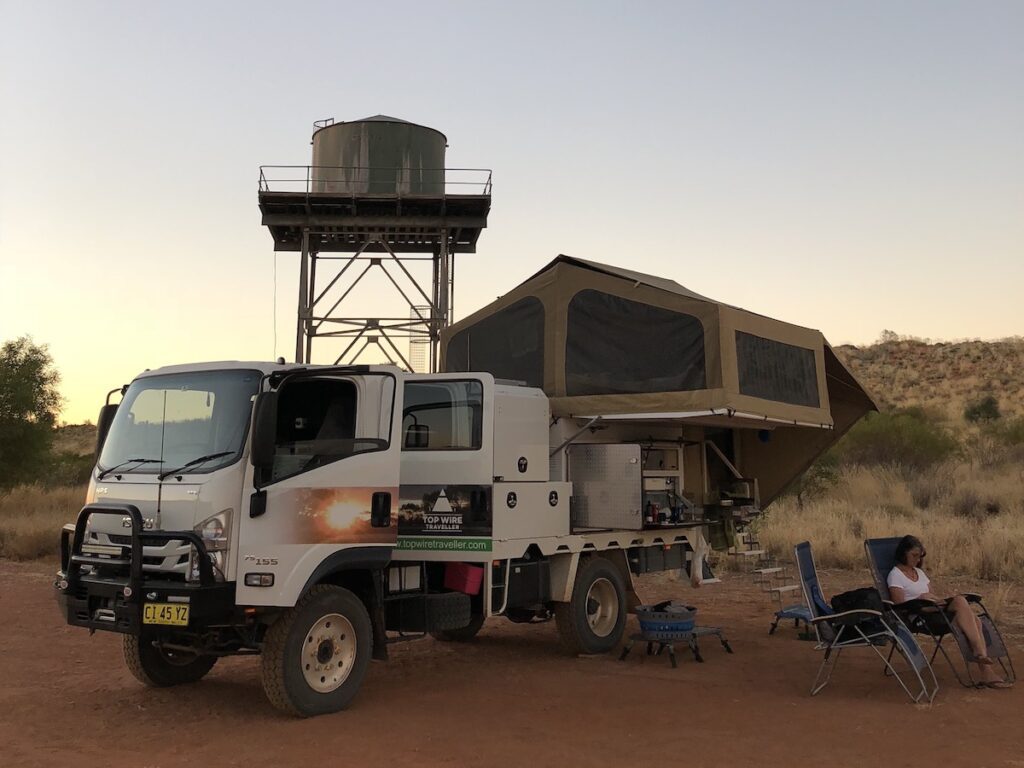
In those six years, we’ve set it up and packed it down around 750 – 1,000 times. The Wedgie’s been through extreme desert heat, savage dust storms, torrential rain, and a 12-hour wind storm with sustained winds well over 100km/h.
No wonder the original camper canvas started showing its age!
The Warning Signs
We have Wedgetail #100. The canvas tent came from Southern Cross Canvas in Victoria. All materials were top-notch, with heavy duty canvas, quality zips, and fine-mesh fly screens.
Since then, Wedgetail Campers have changed to a supplier closer to their factory on the NSW Central Coast… but thankfully, the quality is still obvious.
After six years of use and abuse, we had a tiny wear-through in the canvas near the door. It was in one of those high-traffic places, continually rubbing against the outside step handrail.
It was worn through from continuous use, general wear and tear you’d expect to see.
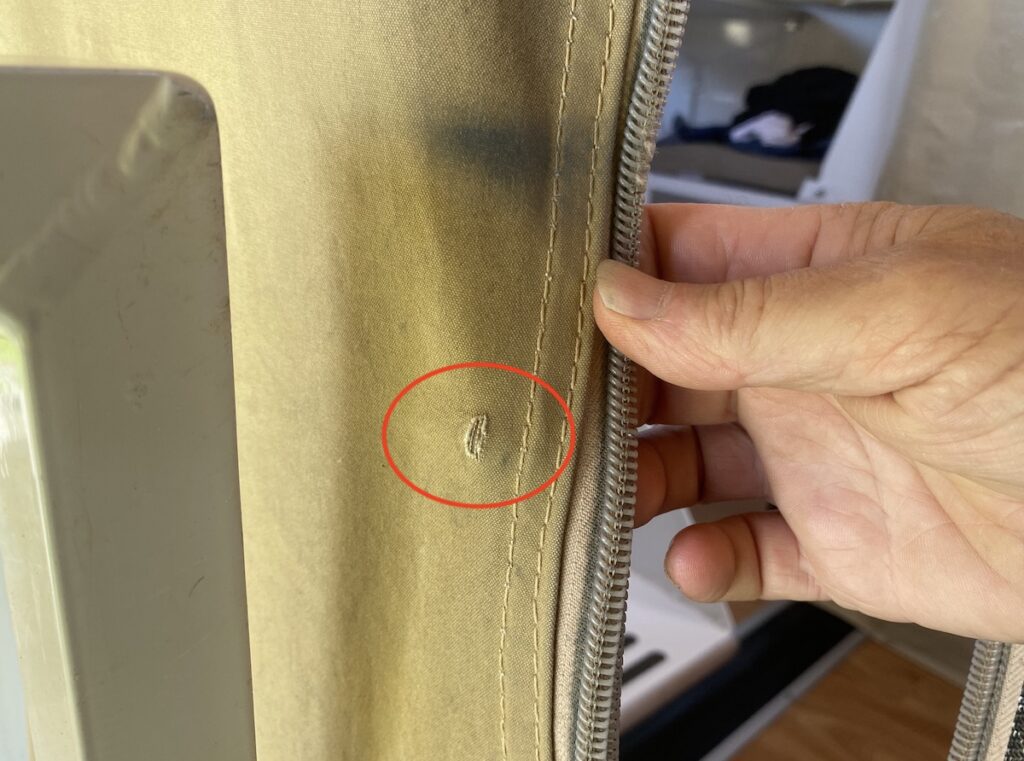
The roof had developed a small rip (about 20mm) along one of the seams. Thankfully it was under the tropical roof, so it didn’t leak. The fly screens were showing their age, mainly due to the camper having been opened and closed so many times.
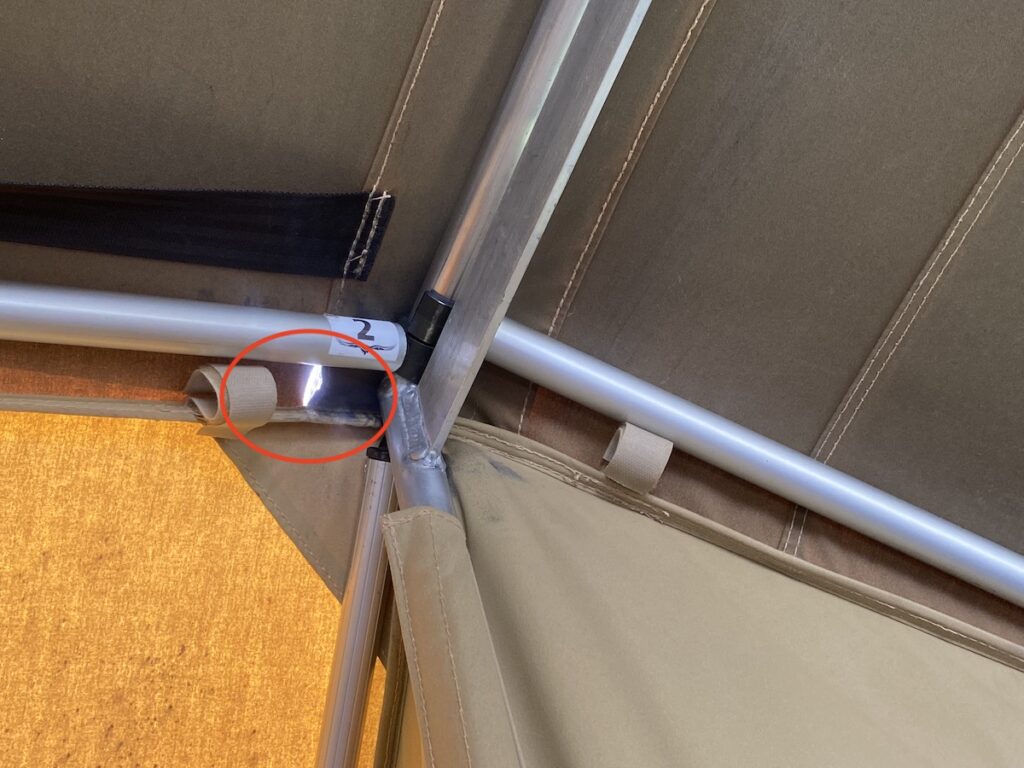
While we never had a rip in any of the flyscreens, they looked threadbare.
And when we looked closer, the warning signs were everywhere… damage inside one corner where an aluminium roof support hoop sat, some very shabby looking UV-damaged hook and loop which held the tropical roof on, and several seams which looked like they’d passed their use-by dates.
And we weren’t surprised.
After all, the Wedgie had been our home for over four years. And when you think about it, four years of continuous use is probably more like 20 or 25 years for the average owner who only does a few big trips every year.
The other issue was more a cosmetic thing. After camping under a few too many trees, the camper had accumulated a whole lot of horrible black stains. It looked like mould, but was actually tree sap.
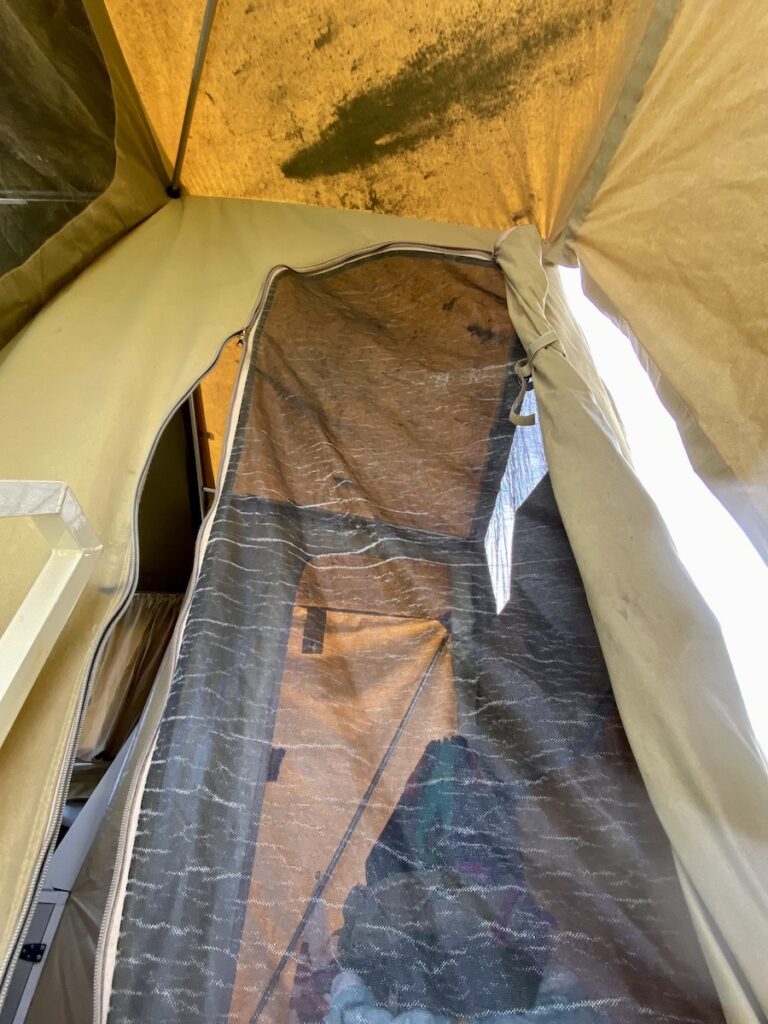
We reckoned the original canvas had well and truly earned its keep!
Renovating Our “House”
After contacting Darren at Wedgetail Campers, we settled on a colour change. Our original canvas was light brown. It hid the dust well, however personally we think the colour looks a bit dated now.
When we bought the camper, the only choice was light brown. Now Wedgetail Campers offers a light grey option, which we think looks great. So that’s the colour we settled on.
Darren warned us the grey would show up red dust far more than the light brown, which makes sense. However, we decided to go with it anyway. We’ll find out soon enough.
With the new canvas on and fully seasoned, we love it. Interestingly, it’s quite different to the original canvas…
The Old Canvas
The old and new canvasses are chalk and cheese. After having both styles, the differences are obvious.
The original camper canvas was tight. The roof was tight, the sides were super-snug fitting against the camper body, and the sides were tight. Everything except the tropical roof was tight, or at least taut.
In fact, it was difficult to completely set up if the canvas was damp or wet because canvas shrinks when wet. And this happened a lot.
We might leave one camp site early with dew still on the canvas. After arriving at the next camp site, we’d have to set up the internal hoops and bars as far as we could because the canvas had shrunk. Then we’d wait until the canvas dried out before finishing the set-up.
The other niggle was with the bottom edges of the canvas, where they overlapped the camper body.
They were slightly too short to easily fit over the camper body. And if the canvas was damp, they wouldn’t quite reach over the corners. So we’d wait for the canvas to dry out, then attend to the corners.
I should point out, these were only minor issues… more of an inconvenience than anything else. However, we always wondered why the canvas wasn’t slightly longer all around. It would have made attaching the canvas to the camper body so much easier.
We mentioned earlier how a roof seam tore and one inside corner had damage under an aluminium roof support hoop. It’s not surprising, because the canvas was so tight.
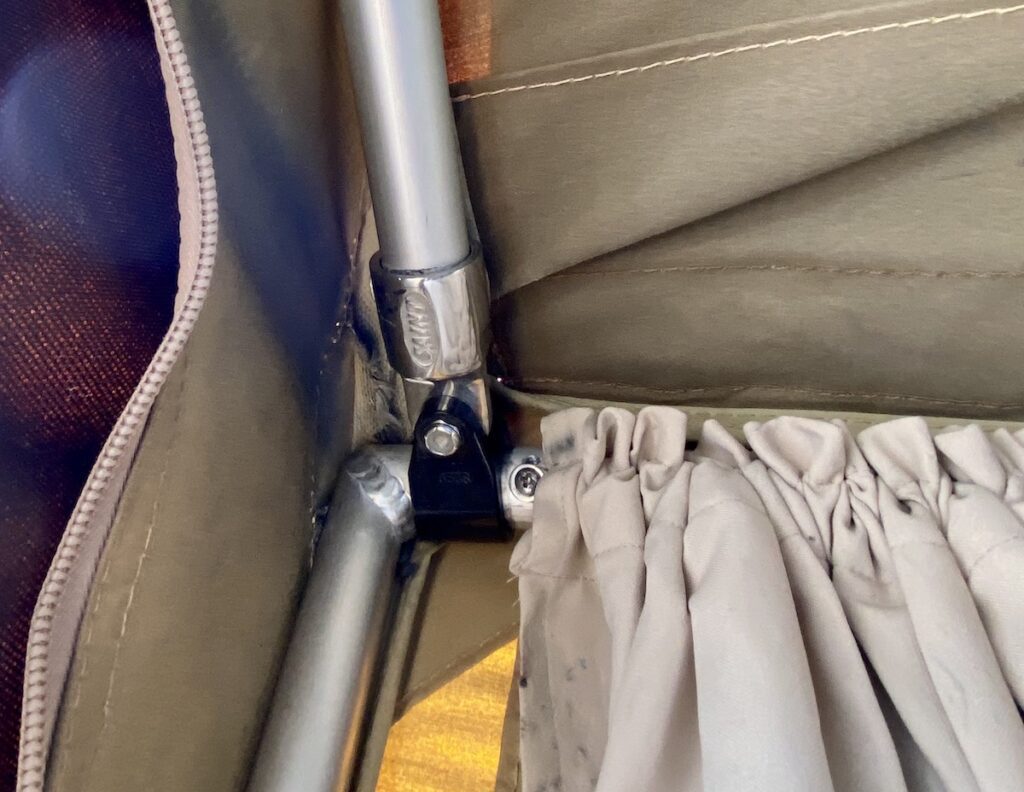
The fact the canvas lasted so long is a testament to the build quality.
It seems Darren at Wedgetail Campers reached the same conclusion about the canvas being too tight and the walls not being quite long enough…
The New Canvas
After we bought the Wedgie, Darren bought the business from the original owner. They had different ideas on the best way to do things, which is perfectly natural.
One of the changes Darren made was to grow the camper canvas slightly in all dimensions. And it makes a huge difference.
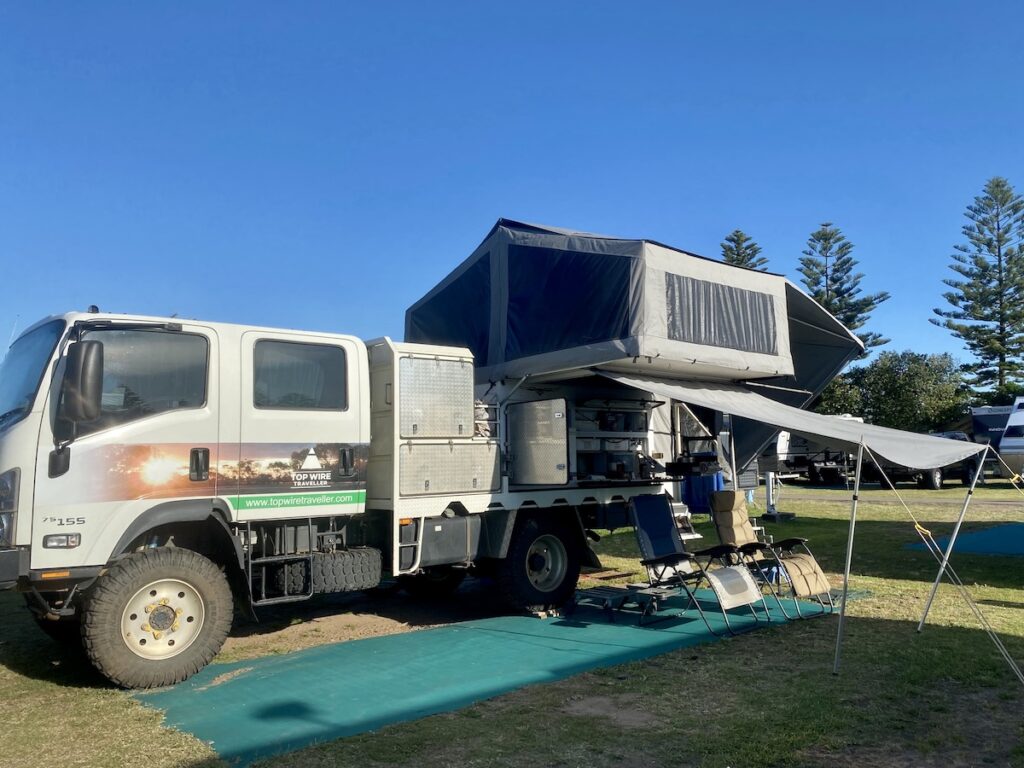
I must admit, when Wedgetail Campers first fitted the new camper canvas I was a bit worried. It looked like a Year Seven schoolboy wearing Dad’s suit. Darren assured us it would be fine… and it was.
It hadn’t been seasoned yet, and was a bigger fit anyway.
Just a few days later, flooding rains swamped us while camping in Mudgee in NSW. The seams leaked slightly in a few places, as you’d expect during the first lot of rain. By morning the rain had stopped, giving the canvas time to dry out.
Rain returned in the afternoon, pouring down all night. And the canvas didn’t leak at all. The previous night was enough to season the canvas and it’s been 100% waterproof ever since.
The rain shrunk the canvas down to size all around. We were surprised how much it shrank. Now it fits neatly without being tight anywhere.
Thankfully, the bottom edges of the walls are much longer. No more battling with corners, trying to wrestle canvas over the camper’s corners. And it’s easy to set up now… wet or dry.
You might be thinking it would flap around like crazy in wind. That’s what we were expecting. Surprisingly, it’s actually much quieter than the original canvas.
Comparing the two, the reasons are now obvious.
Peace And Quiet
With the original canvas, clearly the thinking was to make everything taut so the wind couldn’t flap it around. The only loose piece was the tropical roof.
But when the wind hit the camper from a certain direction, the tropical roof would flap like crazy against the roof… all night! And the walls facing the wind would vibrate against whatever they could find, creating a whirring noise.
We grew used to these nosies and they weren’t a bit deal. But now they’re gone… ahhh, the serenity!
It seems Darren’s thinking is the opposite. Make the tropical roof tight and everything else loose. Believe me, it works. We’re amazed how quiet the camper is now, even in gusty winds.
In fact, it’s so quiet we’re sometimes surprised to discover the wind’s blowing outside. That would never have happened when we had the old canvas.
Fit aside, what else is different?
The Differences Between New and Old
We opted for an extended tropical roof. The extension covers the entry and en suite roof, which helps keep the whole camper cooler.
Grey canvas makes the interior darker, especially at night. This surprised us because for some completely illogical reason, we were expecting the opposite. The grey canvas looks lighter than brown canvas in the flesh, but it’s not.
Darren uses bungee loops instead of press studs where the camper canvas attaches to the rear pod. Set up and pack down is even quicker and easier now.
The entry door is bigger. It tapers out from the bottom, giving a larger opening area. And now the canvas is looser all around, all window and door zips are easier to open and close.
The only real weak point of the entire camper was the side straps which held the tropical roof on. They used to cop a hiding when the tropical roof was flapping around.
Eventually they’d fray and break. Now Wedgetail Campers uses a wide strip of heavy duty hook and loop instead of straps, which should last a lot longer. And with the tropical roof tight, they won’t have to do as much work either.
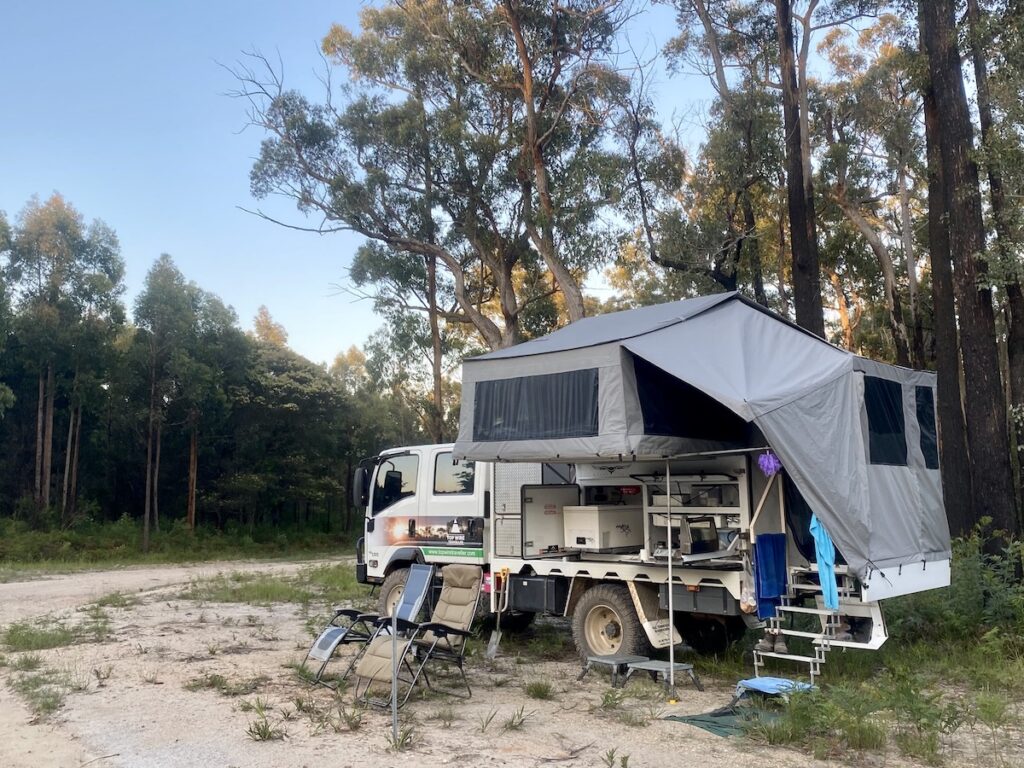
A couple of things inside are different between old and new. For example, the canvas around the en suite shelf doesn’t fit as snugly. Not a big deal, just a comment.
The velcro tags which tie the internal support poles and canvas together, are positioned completely differently. A couple have disappeared on the rear supports and re-positioned to the front, plus there are a few more along the front walls. Again, not a big deal.
They’re just small details which might be useful if you’re thinking of doing a similar upgrade.
A Fresh Look
The Wedgetail Camper is a premium camper. It continues to be ever-reliable and ideal for our travel needs. People often ask why we don’t review it every year. The answer’s simple… there’s nothing much to report.
We highlighted this in our 4-year Wedgetail Camper review. The issues we listed were minor, especially considering it’s been on plenty of rough roads and through extreme weather conditions.
With new camper canvas, it has a fresh new look. Will the new canvas last 6 years? Who knows… we’ll let you know in 6 years!
Go here for more Reviews on our Wedgetail Camper.
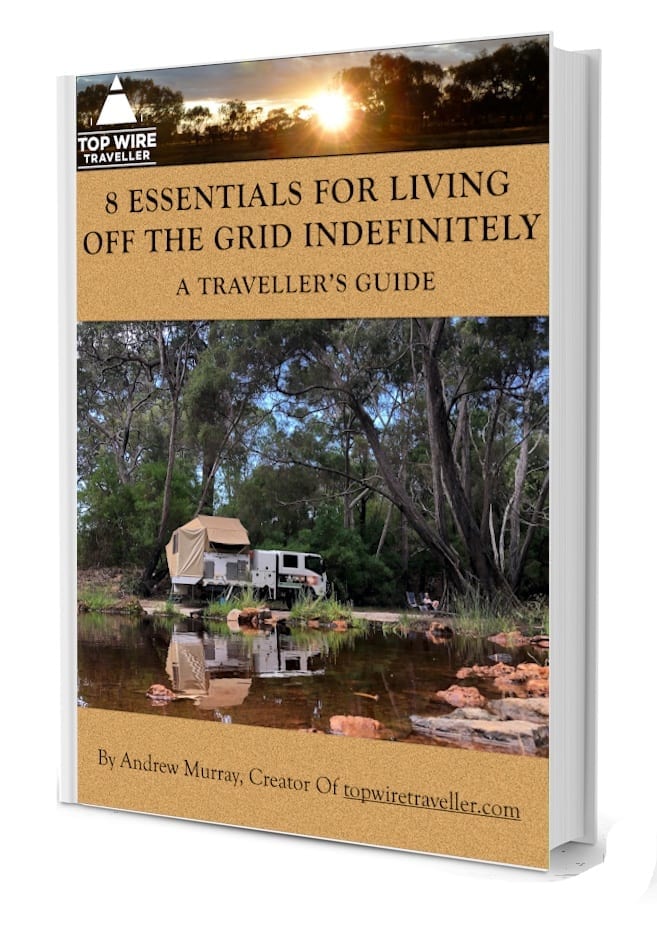
The 8 Things You Need to Live Off-Grid
Make sure your new camper or van has these 8 essentials…
Any questions or comments? Go to the Comments below or join us on Pinterest, Facebook or YouTube.
Any errors or omissions are mine alone.
Note: We have no affiliation with Wedgetail Campers. All our articles and reviews are 100% upfront and honest. We tell it how it is.

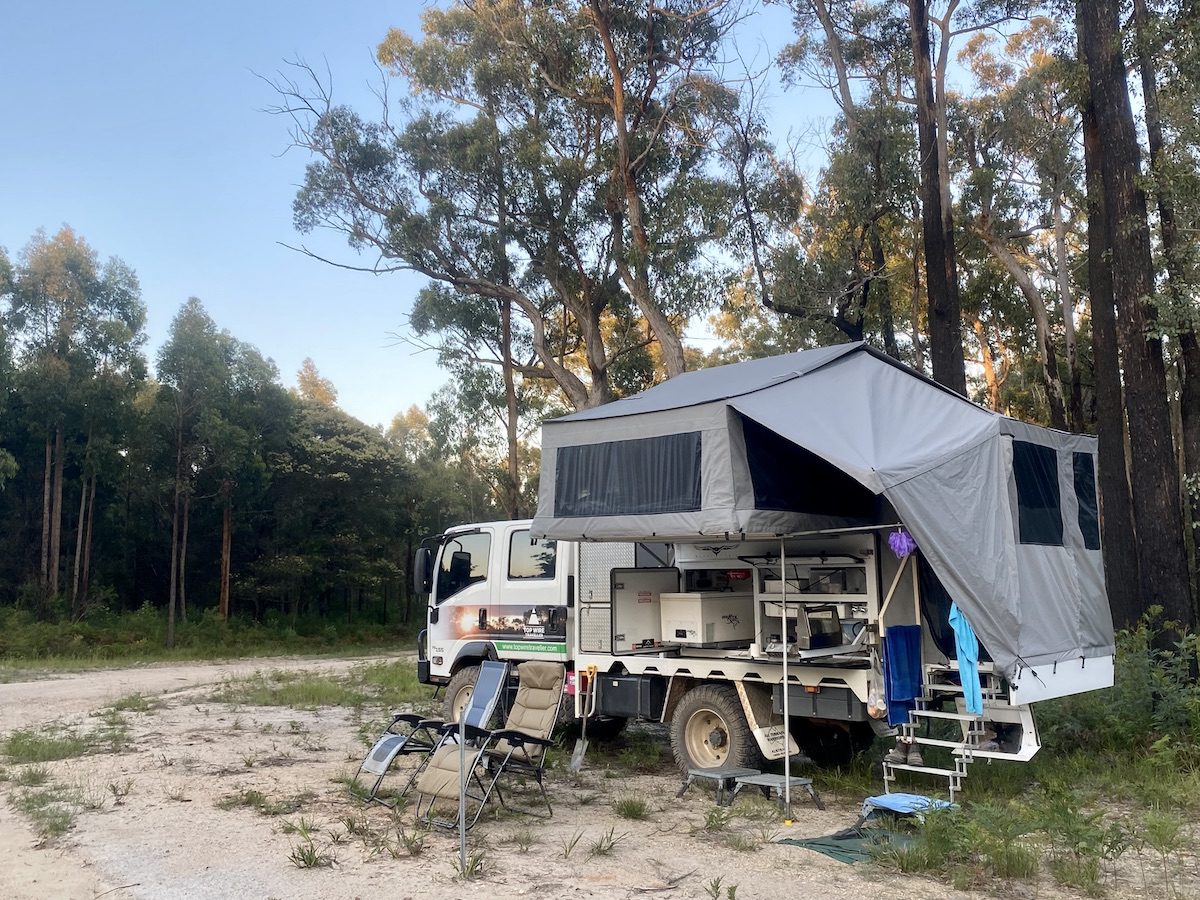
Very interesting post! We have a much earlier Wedgetail and have had some canvas repairs – mainly a new door (now straight not curved and with zips both sides) and flyscreen (door only). But we do still experience the inconveniences you mention above, i.e. stretching it over the edges and attaching the loops where the bed is when setting up; and the tropical roof flapping in high winds. If we were to have a whole new canvas fitted we would likely stick to the same original colour as we have the awning and the canvas skirt (wind breaker) that fits under the outdoor kitchen area so it would make sense to keep it all matching. Thanks for such a detailed post 🙂
Hi Kay,
I like the idea of a straight-zipped door with zips both sides. Although now the canvas is looser, I expect the curve won’t really be an issue any more. We’ll wait and see!
I understand what you mean about the awning and skirt colour. If they don’t need replacing, then changing colours doesn’t make sense.
Cheers, Andrew